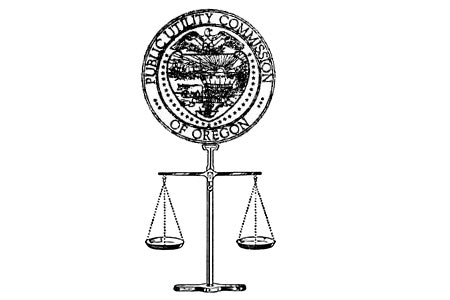Pacific Power Files First General Rate Case in Seven Years
Posted on February 21, 2020 by Will Gehrke
Tags, Energy

PacifiCorp is a multi-state electric utility that does business as Pacific Power in Oregon, Washington, and California, and as Rocky Mountain Power in Wyoming, Idaho, and Utah. Pacific Power provides electric service to approximately 615,000 retail customers in Oregon, in areas including NE Portland, Klamath Falls, Medford, Corvallis, Bend, Pendleton, and Enterprise. Pacific Power filed a general rate case in mid-February for new rates that would go into effect in Oregon on January 1, 2021.
In its filing, Pacific Power is requesting an increase of approximately $70.8 million. If the company’s case was accepted as filed, the average residential customer would experience a 5 percent increase to rates. Pacific Power cites increased costs related to new system investments in generating facilities, wildfire mitigation costs, and investments in coal-fueled power plants as the main drivers for its rate request. Pacific Power has also proposed changes to its pricing structure, including the charges and rate structure for its Oregon residential customers. As always, the Oregon Public Utility Commission (PUC) will have the final say in whether the proposed costs are eligible for recovery, and whether the company’s proposed policy changes are reasonable and should be allowed.
Pacific Power also filed its annual variable power cost case, which includes the cost of fuel for its power plants, wholesale power purchases and sales, and production tax credits for its wind resources. The power cost case involves a rate decrease of $49.2 million. This is related to the general rate case because the cost of repowering its wind plants is included in the general rate case, but the tax credits generated by those wind investments are included in the annual power cost case. The tax benefits associated with wind repowering will be passed back to customers over the next decade. Pacific Power also included an additional temporary offset related to the 2017 federal tax bill that cut corporate taxes.
The total impact of all of Pacific Power’s cases combined is a rate increase of 1.6 percent for residential customers.
A general rate case is the process by which a utility asks its regulators for changes in rates. In order for Pacific Power to increase its rates, the utility must demonstrate a legitimate need, as well as an economic rationale for increased costs. The bulk of work in a general rate case is reviewing new capital investments.
Pacific Power has made significant capital investments since 2013, and is seeking cost recovery for them. The company is currently finalizing its Energy Vision 2020 project, which included repowering its wind generation fleet and adding new transmission lines to its system. Pacific Power is building a new renewable resource and selling the renewable credits associated with the project to Facebook. And the company is installing a new fish passage system in its Lewis River hydroelectric project in Southwest Washington.
The status of Pacific Power’s thermal generating fleet (coal) is a major issue in this general rate case. Pacific Power is seeking cost recovery of its pollution control equipment for several of its thermal generating plants. In order to keep thermal coal units in operation, the utility has installed emission control equipment to comply with federal environmental regulation. CUB’s recent analysis has shown that major investments in coal plants are not cost effective and it is usually cheaper for customers to retire the coal plant. We will be closely examining the costs of these projects and may recommend that the PUC reject the coal investments.
Because this is the company’s first rate case in seven years, there is a lot of information to review. We have already begun to dive into the case here at CUB, and will be issuing discovery and engaging in workshops before the process fully begins at the PUC. CUB will be spending the next few months reviewing the reasonableness of Pacific Power’s case – stay tuned for updates here on the CUB Blog and via our email list!
To keep up with CUB, like us on Facebook and follow us on Twitter!




02/20/20 | 0 Comments | Pacific Power Files First General Rate Case in Seven Years